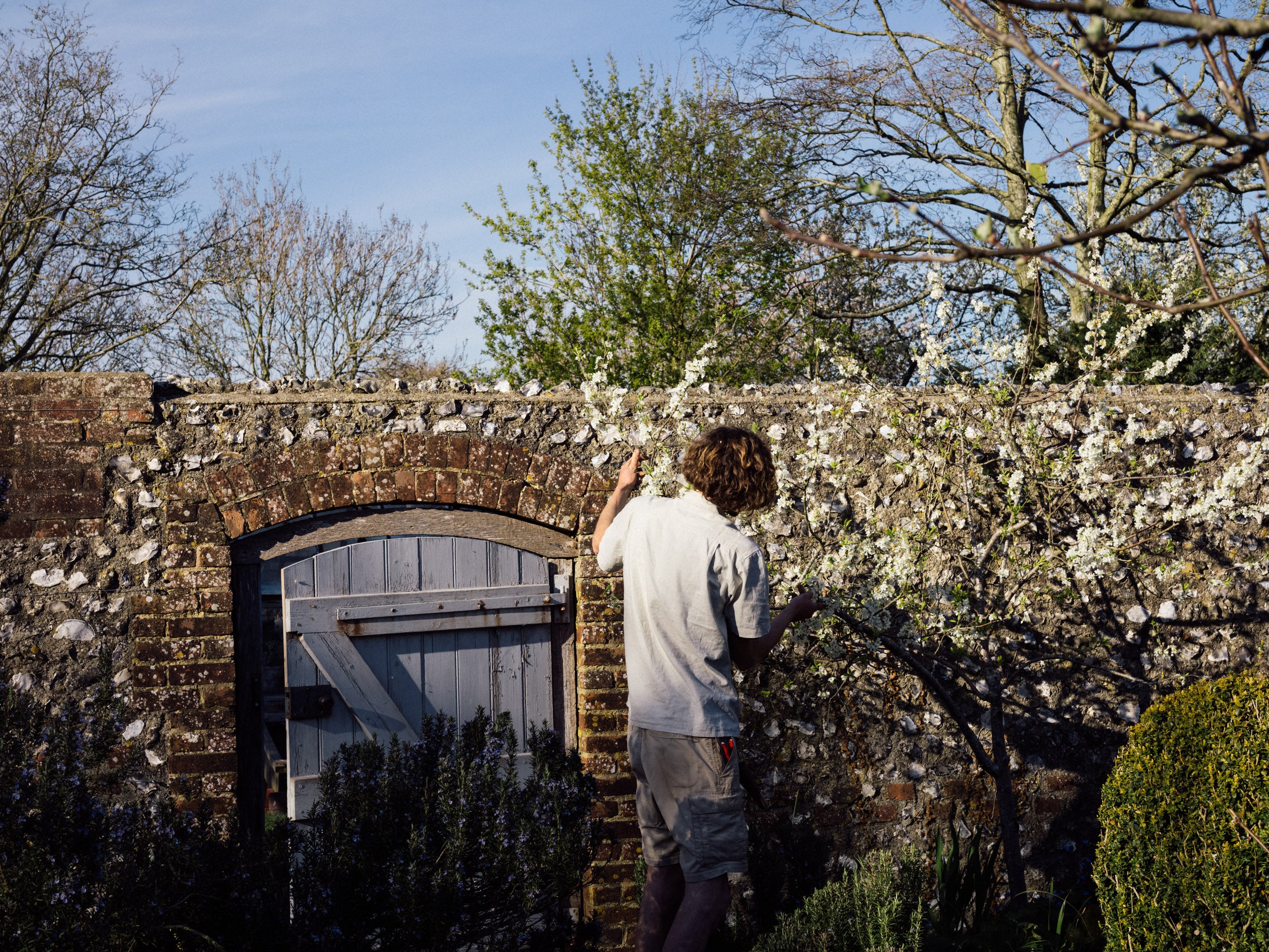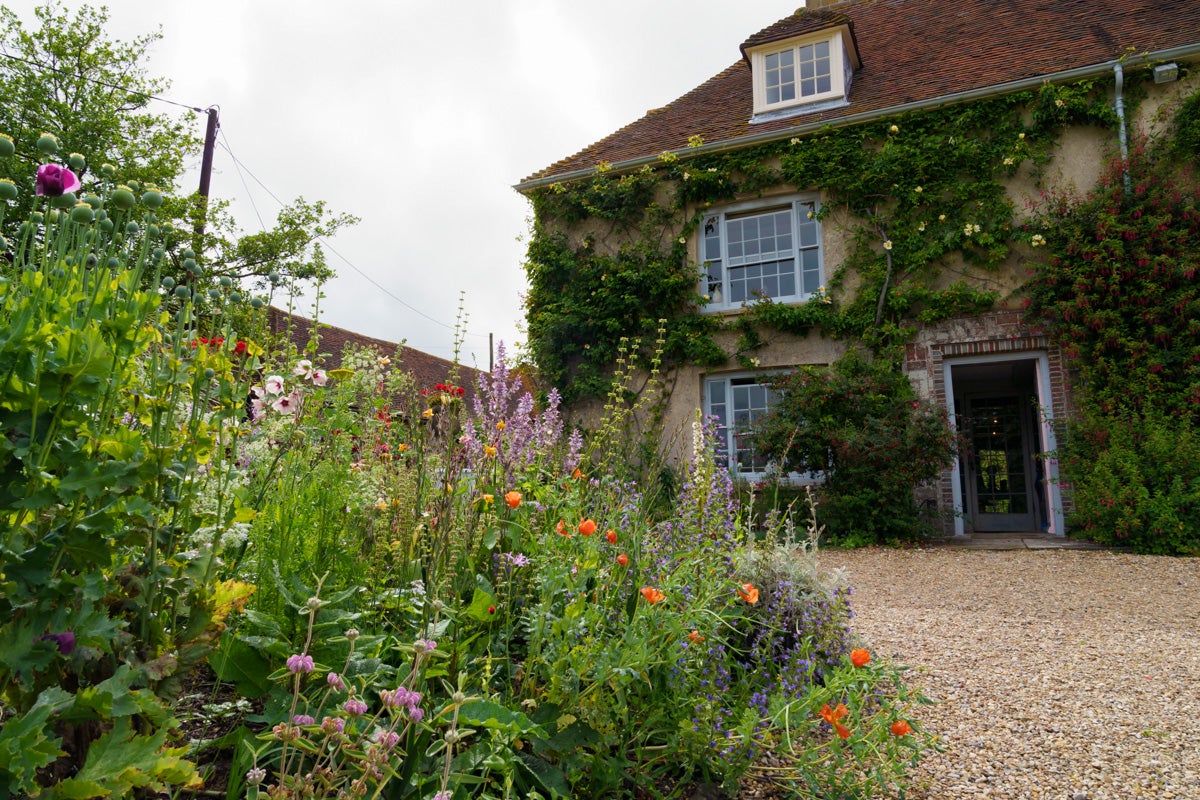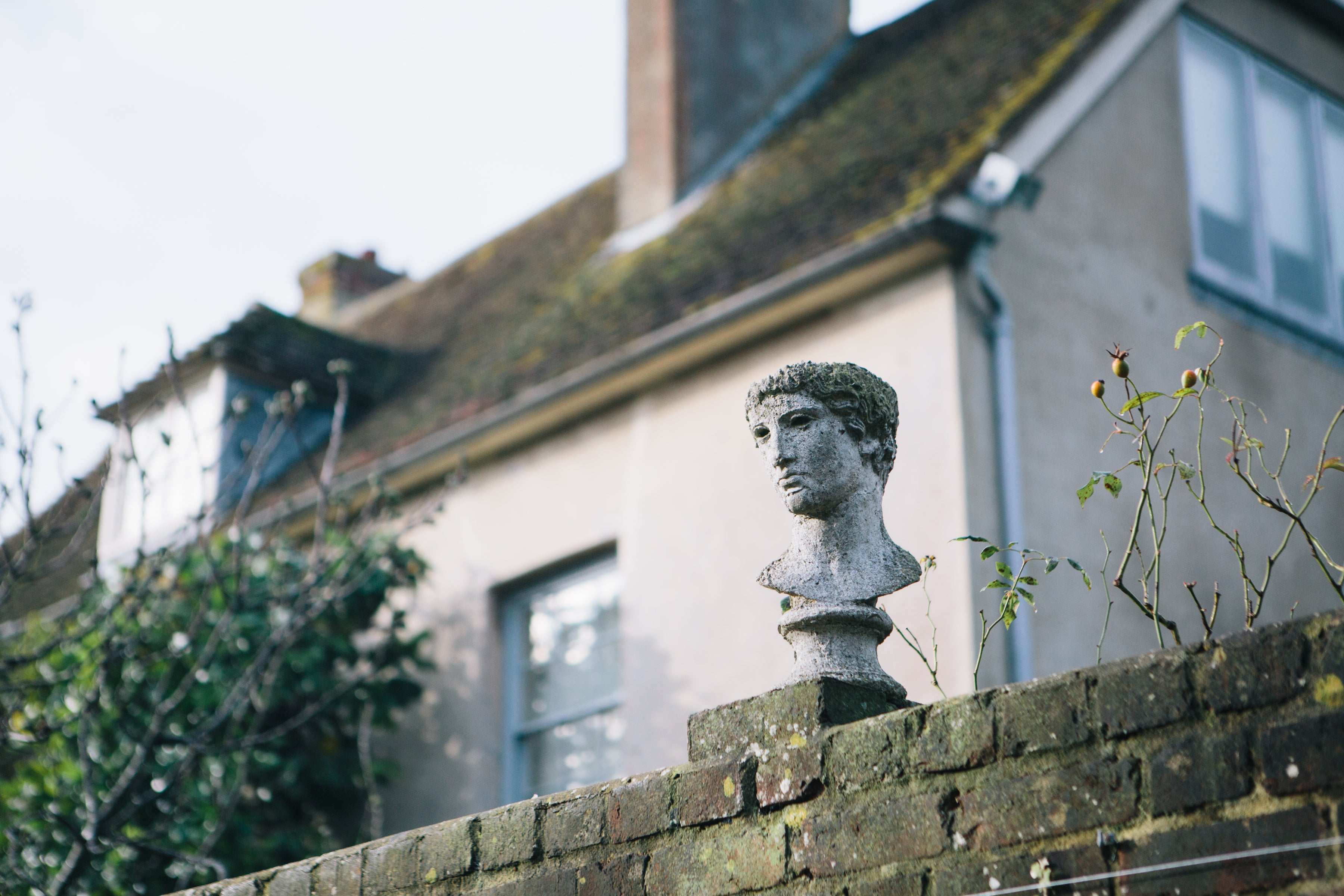‘It was always an artist’s garden’: How Charleston became Vanessa Bell’s muse
In her new book, ‘Why Women Grow’, Alice Vincent explores why women turn to the soil. In this extract, she retraces the steps of artist Vanessa Bell among the apple trees and rose bushes of Charleston in Sussex

My new book, Why Women Grow, emerged from a state of longing I didn’t initially understand. Isolated, like many, by lockdown, I now realise I was seeking the company and wisdom of others to help make sense of the changes happening in my life as the world became ever more unrecognisable. But in the first instance, I just wanted to find out why women gardened – something that for so long has been considered a quiet, if not quaint, and often rarefied pursuit. From my own experience as a self-taught, urban gardener, I knew there was more to our connection with the earth than pruning roses; I wanted to delve into the power, resistance and politics of why we grow. And so I went out, across the country and, later, the continent, to speak with strangers about their relationship with the land.
What I got in return were generous, fascinating and intimate stories about women’s lives. The two – gardening and womanhood – were entwined. The women I spoke to were refugees and rehabilitating prisoners, divorcees of chocolate fortune heirs and drag kings. I spoke to 45 of them, and one man: Harry Hoblyn, head gardener at Charleston, to better understand the lesser-known creation of the late painter Vanessa Bell. I’d admired Bell’s work for decades, it had spoken to me while I was in my teens; but she’d also been a voracious gardener. The flowers she grew with her sometime lover and life partner dovetailed with her work. This is what happened when I sought answers to questions I couldn’t ask her myself.
***
The sweet, cloying smell of cow manure always hoicks me back to my childhood. I catch it in the air at Charleston, the tawny 16th-century farmhouse in the Sussex Downs that, for most of the 20th century, was home and playground to members of the Bloomsbury Group. When it’s open – which it isn’t today – Charleston lures visitors from all over to see its painted walls and gorgeous textiles, the rustic ceramics in the kitchen. Here are the bedrooms of economist John Maynard Keynes and artist Duncan Grant, here is where they sat with critics Roger Fry and Clive Bell, here is where they swam in the pond and made work that changed the shape of the 20th century. Charleston is the kind of place that sends you packing determined to paint circles on your doors in mustards and dusky pinks. I first came here as a precocious teenager, keen to research an A-level project. Fifteen years later and I’ve returned, following a similar kind of curiosity.
Then, I was lured by the bold colours and brushstrokes. I romanticised the bohemianism of it all. My understanding of the Bloomsbury Group’s politics and sexual entanglements – and how the two informed one another – was naive, but I loved Grant’s paintings and attempted my own imitations, making my friends lounge around on their parents’ suburban armchairs in ballgowns, painting them in oils of russet and ochre. I was taken in by the wary stare and clasped hands in Grant’s 1918 portrait of Vanessa Bell; the way the straps of her red dress balanced on her shoulders. And it was Bell who had brought me back.
In the decade or so since, she had been reclaimed by an art history that had overlooked her as Grant’s life partner, as critic Clive Bell’s wife, as the mother of their children, as the lover of critic Roger Fry and the big sister of Virginia Woolf, and instead realised she was a pioneer of abstract art in Britain. The first major retrospective of her work opened in 2017, almost 60 years after her death. Finally, Bell was being taken seriously as an artist, her desire to blend her domestic and maternal life with her practice being reinterpreted as a revolutionary – still – way of living. This was undeniable progress, but I wanted to wade into less-chartered waters. I wanted to learn about her as a gardener.
Charleston is surrounded by its grounds: a gulp of a lake, still carrying a tethered rowing boat on its water, an orchard of gnarled medlars, a snicket of tall trees. Sculptures made by Quentin Bell, Vanessa’s son, loom between the boughs. From most places, you can see the Sussex Downs rumple out beneath like a quilt. The best bit is the walled garden, which fans out from the back of the house. Piebald walls of flint and brick hold roses and apple trees and cloud-pruned box hedges. There’s a neat square of lawn with a tiled rectangular pond in the middle, but even now, on one of April’s last warm days, the overwhelming sense is one of gorgeous rebellion. Bell and Grant’s daughter, Angelica Garnett, wrote that Charleston’s garden “was not a gentleman’s garden or a gardener’s garden, it was always an artist’s garden”. Women make gardens for many reasons, but here was one that appeared to be a muse.
I walk through the gap in the walls that surround the house and spot Harry, Charleston’s gardener. He’s bent down but when he stands up his head of unruly curls is level with the top of the garden wall gates. The tulips are out, the last of the narcissi, the apple trees are budding, but no blossom yet. Winter-spring under clear skies. It’s been dry: no rain, no April showers nearly all month. A sprinkler chugs guiltily against the birdsong. I call out to Harry and he waves a long arm; he’s agreed to speak to me about Charleston’s garden and Vanessa’s role in it. We sit down on a stone bench in the garden’s sunniest corner, where he’s laid out papers and books with gardener’s hands. Here, they are tools as vital as a wheelbarrow or spade: when restoration work began at Charleston in the eighties after Duncan Grant’s death, the garden was a mess. Navigating back to the garden created by Bell and Grant to Roger Fry’s 1918 design has been a decades-long archaeological dig of its own through paintings, letters and lost seed packets. Harry inherited this challenge relatively recently: his predecessor was Fiona Dennis, a plantswoman devoted to tracking down the varieties Grant and Bell had planted nearly a century before.

On the bench, in the early afternoon sunshine, we twist to look back at the house at the top of the garden. Harry points to the windows where the main studio was; the attic where Bell worked in her later years; the ground floor room where she slept. He speaks so softly I’m not sure the microphone can hear. “In many ways she was probably the one that woke up to the garden every day,” he says. “I think in that respect, the garden must have had a real, sort of tangible, significance for her. Perhaps more so than for Duncan and the rest of them.” It’s a funny thing to hear, resonant somehow. I have come to Charleston on an inkling – more instinctive than proven – that Bell’s relationship to the garden was something deep and complex, something possibly overlooked, as her art has been for so long, because of the work done by others around her in the home that she helped to create.
Bell died in 1961, at Charleston. She wrote letters, she painted prolifically; her granddaughter, Virginia Nicholson, is Charleston’s president and holds childhood memories of a grandmother who would encourage her to sit for portraits by asking her to tell stories of the paintings on the studio walls. But that is all there is to work with: memories and makings of a woman who died 60 years – plus a couple of weeks – before my return to the garden. I couldn’t ask her about her garden as I had with other women. Instead, I would have to piece together document and history, sense and logic, to create something that felt true, much as Harry, Fiona and the gardeners before them had done.

“I wish you’d leave Wissett, and take Charleston,” Woolf wrote to Bell in May 1916. “It has a charming garden, with a pond, and fruit trees, and vegetables, all now rather run wild, but you could make it lovely.” By the autumn, Bell had done so, along with her husband Clive, Duncan Grant and his lover David “Bunny” Garnett. The walled garden was a quagmire of mud and potatoes, the apple trees – included, to Bell’s delight, in the rental agreement – were fruiting, but it was nevertheless “a desolate place”, Quentin Bell remembered. His mother had packed artichoke roots, the beginnings of the towering cardoons that would punctuate the garden and her paintings for decades to come.
The Bells had two boys: Julian, then eight, and Quentin, six. The group had been lured to Sussex by the raging war: Grant and Garnett sought agricultural work to enable their legitimacy as conscientious objectors. For Bell, a born and raised Londoner, growing food to feed her boys was the priority. “Life in wartime Sussex seemed to Vanessa principally a matter of survival,” remembered Virginia Nicholson, in conversation with her father Quentin Bell in their book, Charleston: A Bloomsbury House & Garden. In a letter to Roger Fry in late February 1917, Bell writes: “I’m making great efforts to get hold of a pig, rabbits etc, and get the garden dug. I see the only way is to take complete charge myself.” A determination that makes me imagine frost on mud, grubby knees and short days, and the ready makings of a matriarch who would keep the house ticking over for a further four decades.

Not long after, Fry started work on a more formal ornamental design for the walled garden, and began to lay the brickwork of the grid-like hard landscaping that remains today. Charleston’s garden, like its house, was a collaboration. Beyond Fry’s design, Grant was a magpie for plants, seeking out tropical varieties that recalled his upbringing in Myanmar. He cast heads and figures from art school plaster casts and dotted them around the place. He longed for flamingos that never arrived. There was one gardener, and then another, to do the labour and maintenance. Bell’s role seems both less defined and somehow more centrifugal: she oversaw the gardeners; she pruned and weeded; she cut flowers to relish in the house; she painted, she painted, she painted. “Charleston is as usual,” Woolf wrote in 1922. “Nessa emerges from a great variegated quilt of asters and artichokes.” Angelica, Bell’s daughter, recalled her mother in the garden “hovering peaceably in front of her easel, her dress protected by a flimsy French apron, her feet in flat-heeled espadrilles, and on her head a broad-brimmed hat to shade her eyes from the glare. Her presence was betrayed by a smell of oil and turpentine.”
‘Why Women Grow: Stories of Soil, Sisterhood and Survival’ is published by Canongate on 2 March
Join our commenting forum
Join thought-provoking conversations, follow other Independent readers and see their replies
Comments


Bookmark popover
Removed from bookmarks